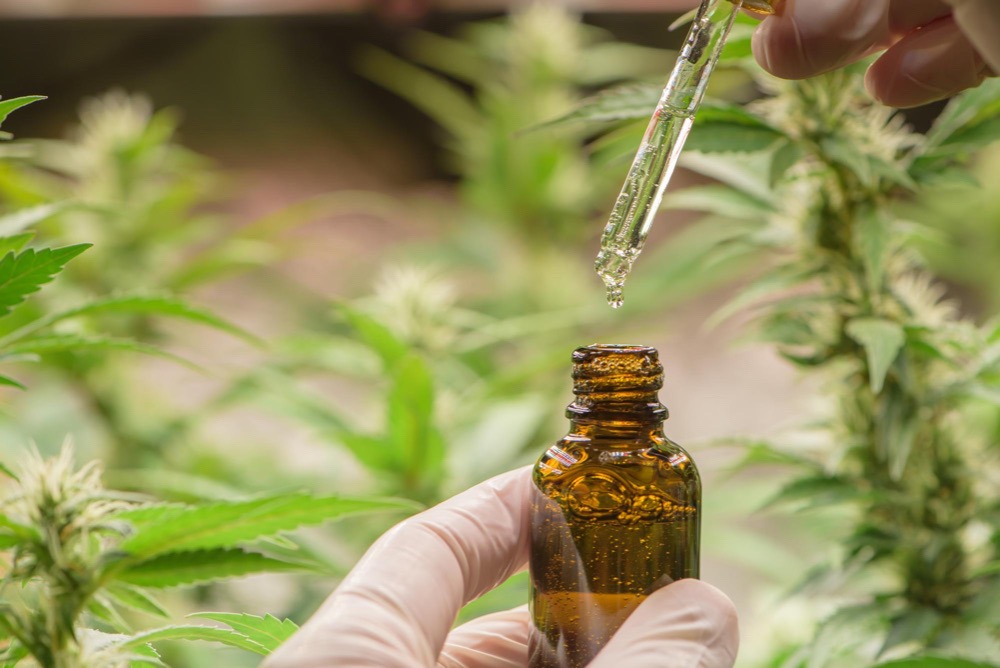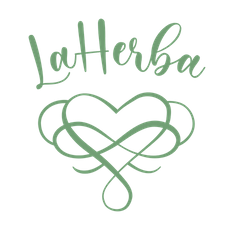
Cannabinoid - what it is?
What are cannabinoids?
The word cannabinoid refers to every chemical substance, regardless of structure or origin, that joins the cannabinoid receptors of the body and brain and that have similar effects to those produced by the Cannabis Sativa plant.
The three types of cannabinoids that people use are recreational, medicinal and synthetic.
Research has found that the cannabis plant produces between 80 and 100 cannabinoids and about 300 non-cannabinoid chemicals.1 The two main cannabinoids are delta-9-tetrahydrocannabinol (THC) and cannabidiol (CBD).
The most commonly known of the two is delta-9-tetrahydrocannabinol (THC), which is the chemical that is responsible for the psychoactive effects of cannabis.
The main difference between the two cannabinoids is that THC has strong psychoactive effects, meaning it makes a person ‘high’, whereas CBD is thought to have an anti-psychoactive effect that controls or moderates the ‘high’ caused by the THC. CBD is also thought to reduce some of the other negative effects that people can experience from THC, such as anxiety.
------------------------------------
Cannabinoids are several structural classes of compounds found in the cannabis plant primarily and most animal organisms (although insects lack such receptors) or as synthetic compounds.[1][2] The most notable cannabinoid is the phytocannabinoid tetrahydrocannabinol (THC) (delta-9-THC), the primary intoxicating compound in cannabis.[3][4] Cannabidiol (CBD) is a major constituent of temperate Cannabis plants and a minor constituent in tropical varieties.[5] At least 113 distinct phytocannabinoids have been isolated from cannabis, although only four (i.e., THCA, CBDA, CBCA and their common precursor CBGA) have been demonstrated to have a biogenetic origin.[6] It was reported in 2020 that phytocannabinoids can be found in other plants such as rhododendron, licorice and liverwort,[7] and earlier in Echinacea.
Phytocannabinoids are multi-ring phenolic compounds structurally related to THC,[8] but endocannabinoids are fatty acid derivatives. Nonclassical synthetic cannabinoids (cannabimimetics) include aminoalkylindoles, 1,5-diarylpyrazoles, quinolines, and arylsulfonamides as well as eicosanoids related to endocannabinoids.[3]
Uses
Medical uses include the treatment of nausea due to chemotherapy, spasticity, and possibly neuropathic pain.[9] Common side effects include dizziness, sedation, confusion, dissociation, and "feeling high".[9]
Cannabinoid receptors
Before the 1980s, cannabinoids were speculated to produce their physiological and behavioral effects via nonspecific interaction with cell membranes, instead of interacting with specific membrane-bound receptors. The discovery of the first cannabinoid receptors in the 1980s helped to resolve this debate.[10] These receptors are common in animals. Two known cannabinoid receptors are termed CB1 and CB2,[11] with mounting evidence of more.[12] The human brain has more cannabinoid receptors than any other G protein-coupled receptor (GPCR) type.[13]
The Endocannabinoid System (ECS) regulates many functions of the human body. The ECS plays an important role in multiple aspects of neural functions, including the control of movement and motor coordination, learning and memory, emotion and motivation, addictive-like behavior and pain modulation, among others.[14]
Cannabinoid receptor type 1
CB1 receptors are found primarily in the brain, more specifically in the basal ganglia and in the limbic system, including the hippocampus[11]and the striatum. They are also found in the cerebellum and in both male and female reproductive systems. CB1 receptors are absent in the medulla oblongata, the part of the brain stem responsible for respiratory and cardiovascular functions. CB1 is also found in the human anterior eye and retina.[15]
Cannabinoid receptor type 2
CB2 receptors are predominantly found in the immune system, or immune-derived cells[16][17][18][19] with varying expression patterns. While found only in the peripheral nervous system, a report does indicate that CB2 is expressed by a subpopulation of microglia in the human cerebellum.[20] CB2 receptors appear to be responsible for immunomodulatory[19] and possibly other therapeutic effects of cannabinoid as seen in vitro and in animal models.[18]
Phytocannabinoids
The classical cannabinoids are concentrated in a viscous resin produced in structures known as glandular trichomes. At least 113 different cannabinoids have been isolated from the Cannabisplant.[6] To the right, the main classes of cannabinoids from Cannabis are shown.
All classes derive from cannabigerol-type (CBG) compounds and differ mainly in the way this precursor is cyclized.[21] The classical cannabinoids are derived from their respective 2-carboxylic acids (2-COOH) by decarboxylation (catalyzed by heat, light, or alkaline conditions).
Tetrahydrocannabinol (THC)
Tetrahydrocannabinol is the primary psychoactive component of the Cannabis plant. Delta-9-tetrahydrocannabinol (Δ9-THC, THC) and Delta-8-Tetrahydrocannabinol (Δ8-THC), through intracellular CB1 activation, induce anandamide and 2-arachidonoylglycerol synthesis produced naturally in the body and brain. These cannabinoids produce the effects associated with cannabis by binding to the CB1 cannabinoid receptors in the brain.[22]
Cannabidiol (CBD)
Cannabidiol is mildly psychotropic. Evidence shows that the compound counteracts cognitive impairment associated with the use of cannabis.[23] Cannabidiol has little affinity for CB1 and CB2receptors but acts as an indirect antagonist of cannabinoid agonists.[24] It was found to be an antagonist at the putative new cannabinoid receptor, GPR55, a GPCR expressed in the caudate nucleus and putamen.[25] Cannabidiol has also been shown to act as a 5-HT1A receptor agonist.[26]CBD can interfere with the uptake of adenosine, which plays an important role in biochemical processes, such as energy transfer. It may play a role in promoting sleep and suppressing arousal.[27]
CBD shares a precursor with THC and is the main cannabinoid in CBD-dominant Cannabis strains. CBD has been shown to play a role in preventing the short-term memory loss associated with THC.[28]
There is tentative evidence that CBD has an anti-psychotic effect, but research in this area is limited.[29][23]
Cannabinol (CBN)
Cannabinol is a mildly psychoactive cannabinoid that acts as a low affinity partial agonist at both CB1 and CB2 receptors.[30][31][32]Through its mechanism of partial agonism at the CB1R, CBN is thought to interact with other kinds of neurotransmission (e.g., dopaminergic, serotonergic, cholinergic, and noradrenergic).
CBN was the first cannabis compound to be isolated from cannabis extract in the late 1800s. Its structure and chemical synthesis were achieved by 1940[33], followed by some of the first pre-clinical research studies to determine the effects of individual cannabis-derived compounds in vivo.[34] Although CBN shares the same mechanism of action as other more well-known phytocannabinoids (e.g., delta-9 tetrahydrocannabinol or D9THC), it has a lower affinity for CB1 receptors, meaning that much higher doses of CBN are required in order to experience physiologic effects (e.g., mild sedation) associated with CB1R agonism.[35][34] Although scientific reports are conflicting, the majority of findings suggest that CBN has a slightly higher affinity for CB2 as compared to CB1. Although CBN has been marketed as a sleep aid in recent years, there is a lack of scientific evidence to support these claims, warranting skepticism on the part of consumers.[35]
Separation of cannabinoids
Cannabinoids can be separated from the plant by extraction with organic solvents. Hydrocarbons and alcohols are often used as solvents. However, these solvents are flammable and many are toxic.[61] Butane may be used, which evaporates extremely quickly. Supercritical solvent extraction with carbon dioxide is an alternative technique. Once extracted, isolated components can be separated using wiped film vacuum distillation or other distillation techniques.[62] Also, techniques such as SPE or SPME are found useful in the extraction of these compounds.[63]
History of cannabinoids
The first discovery of an individual cannabinoid was made, when British chemist Robert S. Cahn reported the partial structure of Cannabinol (CBN), which he later identified as fully formed in 1940.
Two years later, in 1942,[64] American chemist, Roger Adams, made history when he discovered Cannabidiol (CBD).[65] Progressing from Adams research, in 1963[66] Israeli professor Raphael Mechoulam[67] later identified the stereochemistry of CBD. The following year, in 1964,[66] Mechoulam and his team identified the stereochemistry of Tetrahydrocannabinol (THC).
Due to molecular similarity and ease of synthetic conversion, CBD was originally believed to be a natural precursor to THC. However, it is now known that CBD and THC are produced independently in the Cannabis plant from the precursor CBG.
"Healing power of cannabinoids."

Sources:
The information provided on this website is for educational purposes only. None of the information presented here is intended as a substitute for a medical diagnosis and such information cannot be considered medical advice or recommended treatment. This website does not support, approve or advocate the use of narcotic and psychotropic substances.
How to Use Rapé: A Step-by-Step Guide
- Start with a pea-sized amount of Rapé in your palm. Consider a smaller amount if you are sensitive, have low pain tolerance, or if you’re new to Rapé. It is better to be underwhelmed and the...
10 Benefits of Rapé
1. Opening the 3rd eye and cleaning the pineal gland, which can harden as we age.
2. Helping you quickly enter a meditative state for inner peace and clarity.
3. Activating the prefrontal ...
The Yawanawa Tribe
Since time immemorial Yawanawa people have lived in harmony with nature on the banks of the Gregorio river in the Amazonian region that concentrates the greatest biodiversity on the planet. In this...
Rapeh (Rapé) sacred medicine from Brasil
Rapeh or Rapé, Hapeh, Hapé, a legal and sacred shamanic medicine from the Amazon, pronounced "ha-peh" in English, is a fine powder prepared from Mapacho tobacco and a mixture of herbs, seeds, and a...



